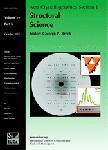版权所有:内蒙古大学图书馆 技术提供:维普资讯• 智图
内蒙古自治区呼和浩特市赛罕区大学西街235号 邮编: 010021

作者机构:Univ Cambridge Yusuf Hamied Dept Chem Lensfield Rd Cambridge CB2 1EW England
出 版 物:《ACTA CRYSTALLOGRAPHICA SECTION B-STRUCTURAL SCIENCE CRYSTAL ENGINEERING AND MATERIALS》 (结晶学报,B辑:结构科学)
年 卷 期:2021年第77卷第3期
页 面:357-364页
核心收录:
学科分类:07[理学] 070205[理学-凝聚态物理] 08[工学] 080501[工学-材料物理与化学] 0805[工学-材料科学与工程(可授工学、理学学位)] 0703[理学-化学] 0702[理学-物理学]
主 题:thermal expansion molecular crystals Cambridge Structural Database python API
摘 要:Typical ranges of thermal expansion coefficients are established for organic molecular crystals in the Cambridge Structural Database. The CSD Python API is used to extract 6201 crystal structures determined close to room temperature and at least one lower temperature down to 90 K. The data set is dominated by structure families with only two temperature points and is subject to various sources of error, including incorrect temperature reporting and missing flags for variable-pressure studies. For structure families comprising four or more temperature points in the range 90-300 K, a linear relationship between unit-cell volume and temperature is shown to be a reasonable approximation. For a selected subset of 210 structures showing an optimal linear fit, the volumetric expansion coefficient at 298 K has mean 173 p.p.m. K-1 and standard deviation 47 p.p.m. K-1. The full set of 6201 structures shows a similar distribution, which is fitted by a normal distribution with mean 161 p.p.m. K-1 and standard deviation 51 p.p.m. K-1, with excess population in the tails mainly comprising unreliable entries. The distribution of principal expansion coefficients, extracted under the assumption of a linear relationship between length and temperature, shows a positive skew and can be approximated by two half normal distributions centred on 33 p.p.m. K-1 with standard deviations 40 p.p.m. K-1 (lower side) and 56 p.p.m. K-1 (upper side). The distribution for the full structure set is comparable to that of the test subset, and the overall frequency of biaxial and uniaxial negative thermal expansion is estimated to be 5% and similar to 30%, respectively. A measure of the expansion anisotropy shows a positively skewed distribution, similar to the principal expansion coefficients themselves, and ranges based on suggested half normal distributions are shown to highlight literature cases of exceptional thermal expansion.